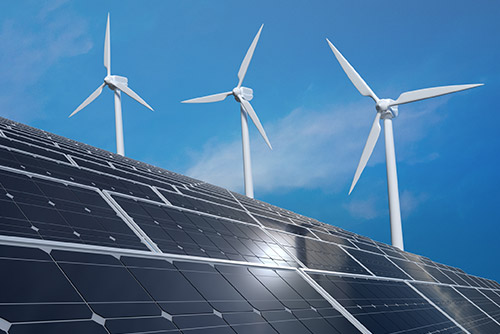Related Posts


You are about to leave Risk Strategies website and view the content of an external website.
You are leaving risk-strategies.com
By accessing this link, you will be leaving Risk Strategies website and entering a website hosted by another party. Please be advised that you will no longer be subject to, or under the protection of, the privacy and security policies of Risk Strategies website. We encourage you to read and evaluate the privacy and security policies of the site you are entering, which may be different than those of Risk Strategies.

Environmentally friendly and a hedge against rising utility costs, alternative energy systems including wind, solar and co-generation plants are seeing strong interest and adoption at campuses across the country. But ensuring these efforts to go - and save - green are a long term success requires an understanding of possible risks and how best to manage them.
This article will provide an overview of the types of alternative energy systems seeing strongest uptake at higher education institutions today, discuss key risk considerations that each present to institutions, as well as measures that can be taken to mitigate and offset the risks and potential liabilities presented.
It is difficult to travel on any road today and not see solar panels on houses, larger solar farms or even wind turbines in the distance. With larger initiatives to create more environmentally sustainable energy and reduce carbon footprints, many businesses are reviewing their options for alternative energy sources, including many Universities.
Three of the most common types of alternative energy solutions being installed today are: Solar panels, wind turbines and cogeneration plants. Let’s take a closer look at each of these, their benefits and risks and what you can do to best manage any of these at your facility.
Solar (Photovoltaic) Panels:
Solar panels convert sunlight to electricity. The individual panels are comprised of multiple photovoltaic cells. Typically, the panels will be installed as part of a solar array either on a roof or mounted in a field. Solar is one of the fastest growing segments in renewable energy and it’s easy to see why. With low maintenance costs and high reliability, they can lower overall electricity costs and add some independence from the electrical grid and its peak prices.
But, the additions of solar arrays do bring with them some potential risk that needs to be understood and taken into account, including:
In addition to, and in conjunction with, these specific hazard considerations, it’s also important to understand who will be responsible for the array. They tend to be owned by a third party and that can complicate risk mitigation and damage repair efforts.
Wind Turbines
Wind turbines convert kinetic wind energy into electricity; using it to turn the blades of a rotor that is connected to a main shaft which spins a generator to create current. Along with solar, it’s the other rapidly growing renewable and one of the most visible of the so-called green energy sources. Like solar, it has some key benefits to recommend its adoption, including its use of a free, abundant resource (wind) to create the electricity and relatively low operational costs. Like solar, wind also has risks that should be factored into planning, installation and operation, including:
Cogeneration
Cogeneration systems are so-named because they produce both heat and power. The excess thermal energy produced in the production of electricity is captured and used for heating buildings or water, or even for powering absorption refrigeration to provide building cooling. Like both solar and wind, co-generation can provide a measure of grid independence and insulating against price spikes and outages, and – in many areas – providing an income stream from excess energy sold back to the utility.
Like the systems themselves, the downsides of cogeneration can be a bit more complex, they include:
No matter the project under consideration some basic principles should be applied to ensure the types of risks mentioned above are well-managed and minimized, including:
As technologies have matured, environmental concerns grown and other fuels become more unpredictable in their cost, going green has gained real momentum. So, bringing some form of renewable energy on campus is likely not a question of “if” but, rather, “how.” Risk is real, but with some foresight and planning, it could be easy to be green.
The contents of this article are for general informational purposes only and Risk Strategies Company makes no representation or warranty of any kind, express or implied, regarding the accuracy or completeness of any information contained herein. Any recommendations contained herein are intended to provide insight based on currently available information for consideration and should be vetted against applicable legal and business needs before application to a specific client.

